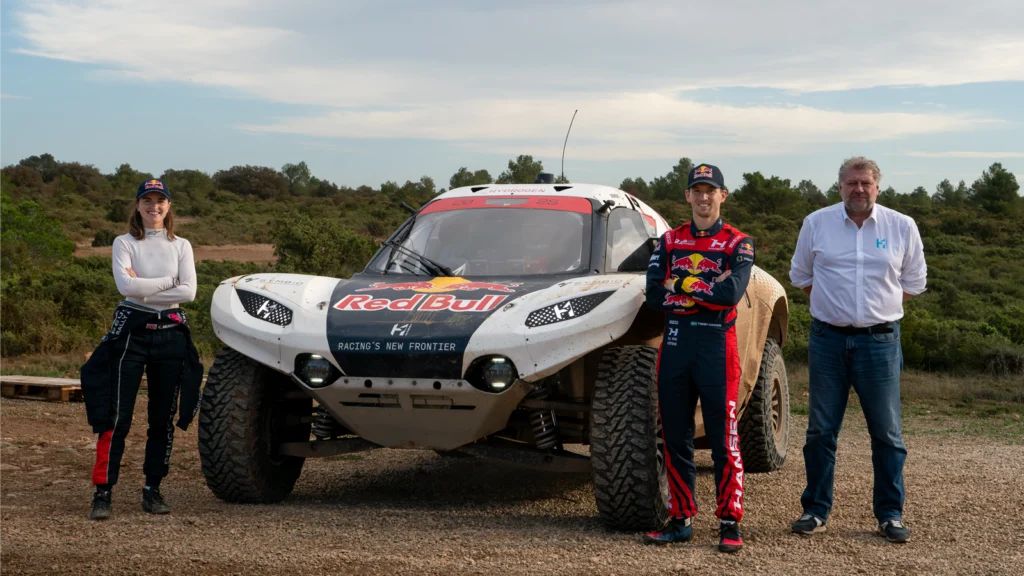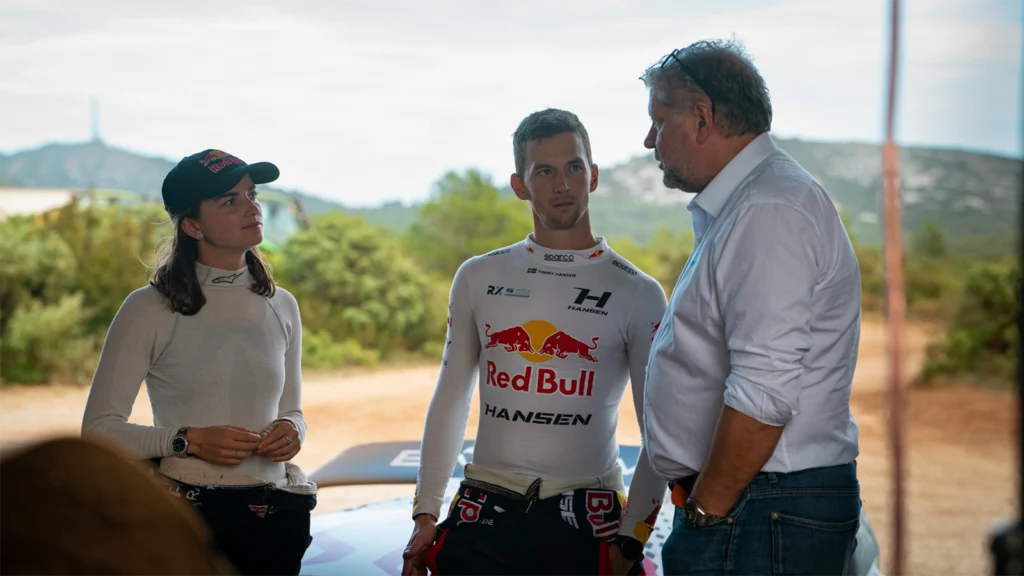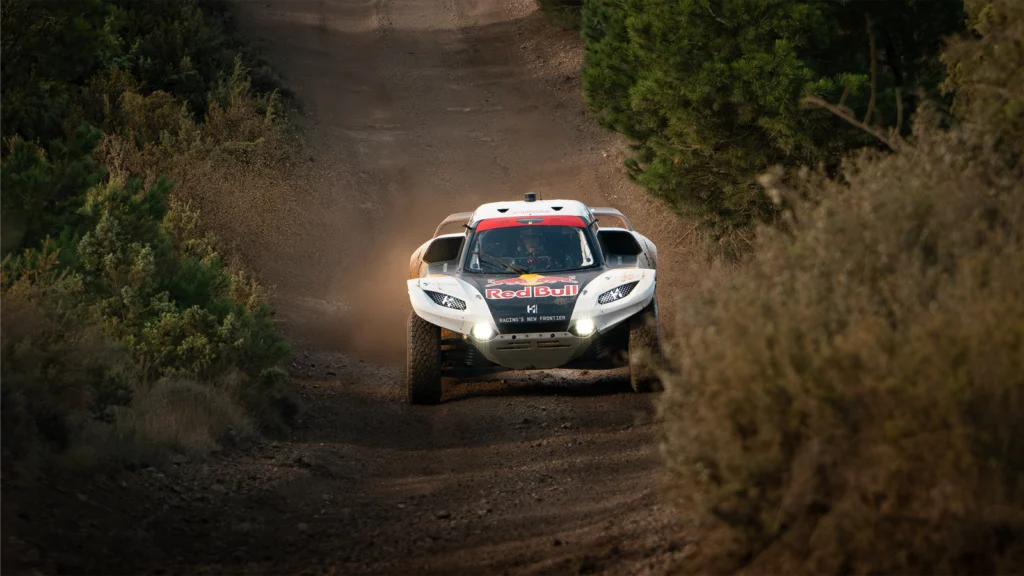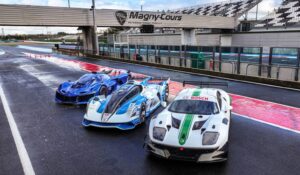Drivers reactions: Extreme E’s hydrogen Pioneer 25 testing

“I think every race car should be built like this,” says Timmy Hansen, Swedish rallycross legend, after his first hydrogen-powered test in the Pioneer 25.
Veteran Extreme E drivers Catie Munnings, Kevin and Timmy Hansen, along with newcomer Niclas Grönholm, took the wheel of the hydrogen-powered Pioneer 25 last week at the iconic Dakar and WRC test track in southern France.
As the Extreme H series gears up for its 2025 debut, this test was a major milestone for the world’s first hydrogen motor racing championship.

The Pioneer 25, named to signal a new era in motorsport, represents cutting-edge hydrogen fuel cell technology.
There are two 200 kW (225 hp) electric powertrains (400kW, 550 hp total) – one at the front, and one at the rear (which are recharged by a 75kW fuel-cell from Symbio), capable of taking the 2.2 tonne vehicle from 0 to 100 kph in just 4.5 seconds.
Developed over the last two years, the car has already completed rigorous testing equivalent to three full seasons of racing (that’s around 2,000 hours).
Now, the testing and involvement of some of the sport’s top drivers brings it one step closer to competitive reality.
Drivers share their first impressions

Catie Munnings, a stalwart in Extreme E racing, was among the first to voice her excitement.
“I’ve been waiting to get behind the wheel of this car ever since I first heard about it, and it did not disappoint!” she said.
Munnings praised the Pioneer 25’s handling, noting improvements over its predecessor, the battery electric Odyssey 21, and underscored the significance of being part of a project that’s pioneering hydrogen in motorsport:
“It’s a thrill to know we’re driving something that could change the face of the sport,” she added.
Timmy Hansen echoed her thoughts, highlighting how the car benefits from lessons learned with the Odyssey 21:
“Overall, you can tell the car is much better designed,” he said.
“There are so many more tools for teams to optimise setups for each track, which could make things really interesting.”
Hansen also praised the driving experience itself, emphasising how the car’s improved balance has transformed the feel behind the wheel.
“Now we sit right in the middle, with full control of where the wheels are. I think every race car should be built like this,” he said, showcasing his enthusiasm for the improved chassis design and stability.
Kevin Hansen, also testing the Pioneer 25 for the first time, shared in the excitement.
Reflecting on the evolution of Extreme E, he commented, “It’s crazy to think that five years ago, we were testing the Odyssey 21, and now we’ve got the brand-new future of the series.”
He too acknowledged the car’s progress, from its better handling to its lower centre of gravity.
Hydrogen technology powering the future of motorsport
At the heart of the Pioneer 25 is a hydrogen fuel cell from Symbio – a technology that many see as the future of sustainable racing.
The 75 kW fuel cell powers a battery pack, managed trackside by Fortescue ZERO, in a system that is basically a hydrogen range extender for the batteries and electric drivetrain.
Mark Grain, Extreme H’s Technical Director, called the test session a “crucial milestone” for the championship’s development, saying:
“The feedback from top-tier drivers like Catie, Kevin, Timmy, and Niclas is invaluable,” Grain said.
Their input, he added, will help fine-tune the car’s performance ahead of its competitive debut.
A promising start for hydrogen motorsport
The Pioneer 25 has passed every challenge thrown its way, from FIA crash tests to gruelling real-world track sessions.
This latest test in France is one of many steps taken to ensure the car is race-ready when the Extreme H series kicks off next year.
With the drivers onboard and the technology rapidly advancing, the future of hydrogen-powered racing is closer than ever.
The countdown to 2025 is on, and if these early reactions are anything to go by, Extreme H could be a game-changer for motorsport.
Development is now frozen on the base vehicles, and now there are just minor tweaks to the fuel cell before debut. Parts production is now underway and four chassis are built so far.








